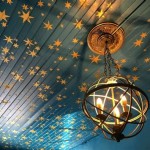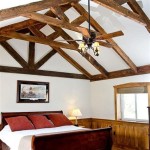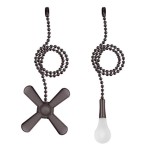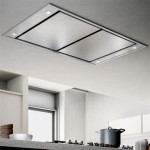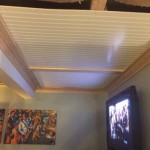What Are Ceiling Decorations Called?
The realm of interior design encompasses a vast array of elements, each contributing to the overall aesthetic and atmosphere of a space. While walls and floors often take center stage, the ceiling, the often-overlooked upper surface of a room, presents a unique canvas for creative expression. This article delves into the terminology associated with ceiling decorations, exploring various terms and their specific applications to provide a comprehensive understanding of the language used to describe these architectural enhancements.
Understanding the nomenclature of ceiling decorations is crucial for effective communication between homeowners, interior designers, architects, and contractors. A precise vocabulary ensures clarity in project planning, material selection, and installation, ultimately leading to desired outcomes and minimizing potential misunderstandings. The terms used to describe ceiling decorations are varied and can sometimes overlap, depending on the specific design element and its intended purpose.
Generally speaking, "ceiling decorations" is a broad, overarching term encompassing any element added to a ceiling to enhance its visual appeal. However, more specific terms are often employed to describe different types of decorative features. These terms can range from purely decorative elements to functional components that integrate aesthetics with utility. This article aims to clarify these distinctions and provide a framework for understanding the vocabulary of ceiling design.
Commonly Used Terms for Ceiling Decorations
Several terms are frequently used to describe ceiling decorations, each carrying slightly different connotations. Understanding these nuances is essential for precise communication and effective collaboration in interior design projects. Here are some of the most common terms:
Ceiling Ornamentation: This term refers to decorative elements that are added to the ceiling for purely aesthetic purposes. Ornamentation can include a wide range of features, such as moldings, medallions, and sculptural elements. The primary function of ceiling ornamentation is to enhance the visual appeal of the room and create a specific ambiance.
Ceiling Fixtures: While primarily functional, ceiling fixtures such as light fixtures can also be considered decorative elements. Chandeliers, pendant lights, and recessed lighting can all contribute to the overall aesthetic of a room. The design and style of these fixtures can significantly impact the perceived style and mood of a space.
Ceiling Treatments: This is a broader term that encompasses any modification or alteration made to the existing ceiling surface. Ceiling treatments can include painting techniques, textured finishes, and the application of decorative materials like wallpaper or fabric. The purpose of a ceiling treatment is often to enhance the visual interest of the ceiling or to create a specific effect, such as adding warmth or texture to the room.
Ceiling Accents: Similar to ornamentation, ceiling accents are decorative features that are added to highlight specific areas of the ceiling or to draw attention to particular architectural details. Accents can include features like coffered ceilings, tray ceilings, and architectural moldings. The use of ceiling accents can create a sense of depth, dimension, and visual interest in a room.
Suspended Ceilings: Also known as dropped ceilings, these are secondary ceilings hung below the main structural ceiling. While often used for functional purposes like concealing ductwork or piping, suspended ceilings can also be decorative, offering opportunities for incorporating lighting, textured panels, or other design elements. They offer flexibility in design and can be easily modified or replaced.
False Ceilings: This term is often used interchangeably with "suspended ceilings." False ceilings serve the purpose of lowering the perceived height of a room, improving acoustics, and providing a space to conceal utilities. They can be constructed from various materials, including gypsum board, mineral fiber, and metal, each offering different aesthetic and functional properties.
Specific Types of Decorative Ceiling Elements
Beyond the general terms, numerous specific types of decorative elements are used to enhance ceilings. Each of these elements possesses unique characteristics and contributes to the overall design in distinct ways. Here are some examples:
Crown Molding: This is a decorative molding that is installed at the junction of the wall and the ceiling. Crown molding adds a touch of elegance and sophistication to a room, creating a visual transition between the wall and the ceiling. It is available in a wide range of styles and materials, from simple, minimalist designs to ornate, intricately carved patterns.
Ceiling Medallions: These are decorative, often circular, elements that are typically installed around light fixtures. Ceiling medallions add a focal point to the ceiling and can enhance the visual impact of a chandelier or pendant light. They are available in a variety of materials, including plaster, polyurethane, and wood, and can be painted or finished to match the surrounding decor.
Coffered Ceilings: These ceilings feature a grid of recessed panels, creating a three-dimensional effect. Coffered ceilings add depth, dimension, and architectural interest to a room. They are often used in formal spaces, such as libraries and dining rooms, to create a sense of grandeur and sophistication.
Tray Ceilings: These ceilings feature a central recessed area, creating a stepped effect. Tray ceilings add height and visual interest to a room. They can be painted in different colors or finishes to further accentuate the architectural detail. They are a popular choice for bedrooms and living rooms.
Beamed Ceilings: These ceilings feature exposed beams, which can be either structural or decorative. Beamed ceilings add a rustic or traditional touch to a room, creating a sense of warmth and character. The beams can be made from wood, metal, or other materials, and can be painted, stained, or left natural.
Skylights: While technically a window, skylights are integrated into the ceiling structure and provide natural light. They can be a significant design element, altering the sense of space and bringing the outside in. Skylights can be fixed, venting, or tubular, each offering different advantages.
Materials Used in Ceiling Decorations
The selection of materials for ceiling decorations plays a crucial role in the overall aesthetic and functional performance of the ceiling. The choice of material depends on factors such as the desired style, budget, and the specific requirements of the space. Several materials are commonly used in ceiling decorations, each with its unique properties and characteristics.
Plaster: Plaster is a traditional material that has been used for ceiling decorations for centuries. It is known for its durability, versatility, and its ability to create intricate and detailed designs. Plaster is often used for crown molding, ceiling medallions, and other ornamental elements. However, it can be more expensive and requires skilled craftsmanship for installation.
Polyurethane: Polyurethane is a synthetic material that is lightweight, durable, and resistant to moisture and insects. It is a popular alternative to plaster for crown molding, ceiling medallions, and other decorative elements. Polyurethane is easy to install and can be painted or finished to match the surrounding decor.
Wood: Wood is a natural material that adds warmth and character to a room. It is often used for beamed ceilings, coffered ceilings, and other decorative elements. Wood can be painted, stained, or left natural, depending on the desired aesthetic.
Metal: Metal is a durable and versatile material that can be used for a variety of ceiling decorations. It is often used for suspended ceilings, light fixtures, and other functional elements. Metal can be painted, powder-coated, or left natural, depending on the desired aesthetic.
Gypsum Board: Also known as drywall, gypsum board is a common material used for creating smooth, seamless ceilings. It is relatively inexpensive and easy to install. Gypsum board can be painted, textured, or covered with wallpaper or other decorative materials.
Acoustic Tiles: These are designed to absorb sound and reduce reverberation. They are often used in commercial settings, but can also be incorporated into residential spaces for improved acoustics. Acoustic tiles come in a variety of styles and colors.
In conclusion, understanding the various terms associated with ceiling decorations is crucial for effective communication and successful interior design projects. By familiarizing oneself with the different types of decorative elements and the materials used to create them, one can navigate the complexities of ceiling design with confidence and achieve the desired aesthetic outcome.

Single Word Requests What Is This Decoration Called That S Found Around Ceilings And Doors English Age Usage Stack Exchange

The 8 Diffe Types Of Ceilings 9wood

What Are Ceiling Decorations Called

A Guide To Diffe Types Of Ceiling Designs

12 Diffe Types Of Ceiling Designs Vip Classic Moulding

The 8 Diffe Types Of Ceilings 9wood

How Suppliers Design Traditional Ornamental Ceilings Building

Diffe Types Of Various Wooden Ceiling Decoration The Architects Diary

The 8 Diffe Types Of Ceilings 9wood

Ceiling Decoration Ideas Diy For Ceilings Addicted 2 Decorating
Related Posts

